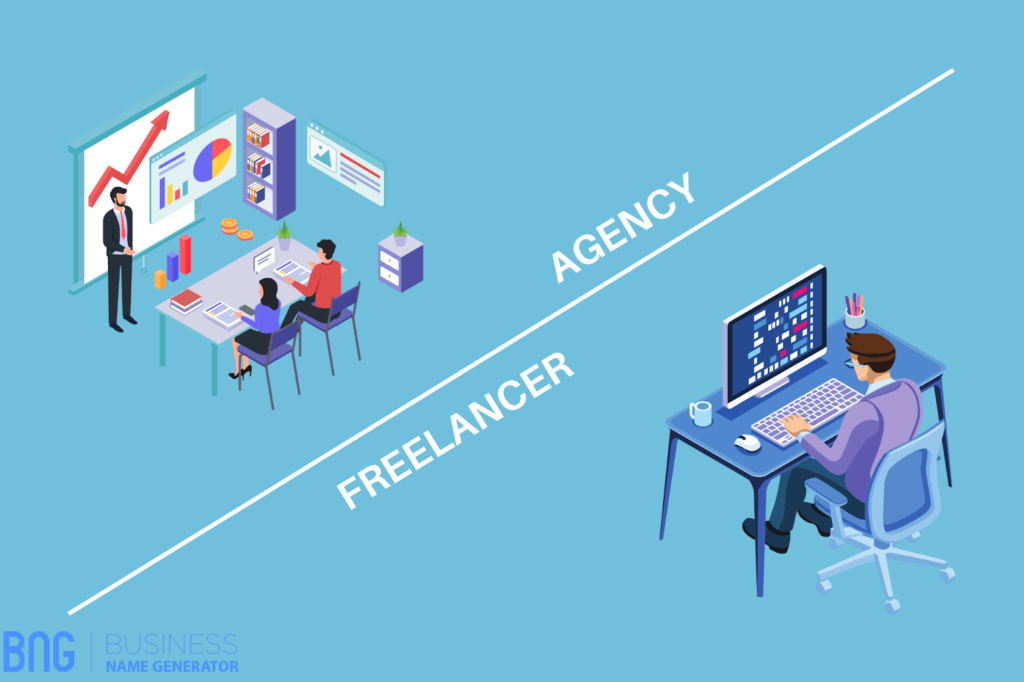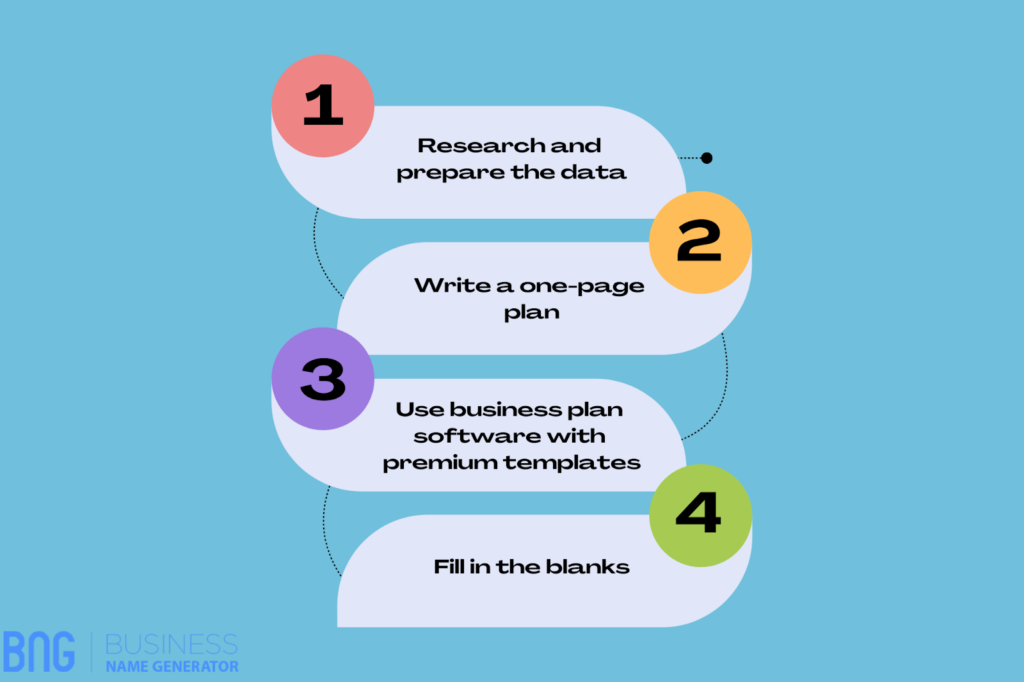Launching a successful startup is hard. It can get messy very quickly.
That’s why you need clarity and stability. A business plan can help you prepare for the obstacles yet to come.
But, writing a business plan sounds daunting to inexperienced startup founders and entrepreneurs. Luckily, we live in a time where we have access to excellent tools that can help us write a fantastic business plan.
This article covers seven different ways you can make a business plan for your startup. But before we start talking about them, let’s look at why business plans are even important for modern startups.
Why Are Business Plans Important For Startups
A business plan helps startups better understand their operations. Without a plan, you’re practically guessing. The goal of every founder should be to control as many details as possible.
That’s the only way to ensure there is some certainty in your startup story.
Business plans are beneficial for all businesses, startups included. Let’s look at some of the benefits they deliver.
- Strategic focus – a business plan helps you focus on the parts of the business that have the biggest impact on your success.
- Set priorities – planning helps you set priorities and do the things that matter most first.
- Cash flow – smart financial planning helps you optimize and organize your cash flow to ensure you’re always operating at full capacity.
- Goals and KPIs – the goals and KPIs you set show a clear path for your business. The goals represent the milestones you want to achieve.
- Get funded – you need a business plan if you want to get funded. Banks, venture capitalists, and investors want to see a business plan before giving you money.
- Stay on track – a business plan can help you regain focus when you get lost on your track.
As you see, there’s a lot a good business plan can do for your business. Now that we know it’s worth investing in one let’s look at some ways you can create the right business plan for your startup.
| Important tip! A powerful startup name is one thing you need before launching a successful startup. The right name helps you get noticed and remembered. We suggest you try our startup name generator to create amazing startup names. |
Outsource To Freelancers
The first option you have is to outsource your business plan to freelancers. Find people with experience writing business plans for startups and pay them to write one for your business.
You will ensure that the plan has everything it needs to have. A good plan makes it easier to get a bank loan or funding from venture capitalists. It’s also easier to track the costs of writing a plan if you’re outsourcing the creation.
You can also be sure that your business plan will be high-quality if you hire professional freelancers with a proven track of writing startup plans.
Another added benefit of outsourcing is that you and your team can focus on other tasks that will help you grow your startup. You will probably have to answer some questions and provide the information the freelancer needs.
After that, you can focus on other things while the freelancer does the work. They will ensure that you have the correct market analysis data. They will dig deep for relevant information to include in your business plan.
The downside of this approach is that freelancers cost money. It’s impossible to outsource the process if you don’t have the funds. Luckily, freelancers generally cost less than outsourcing to an agency.
Outsource To Agencies
The process is exactly the same as when you outsource to freelancers. The only difference is you are working with an agency instead of individual freelancers.
The main benefit of this approach is the added guarantee you’ll receive top-notch quality. Agencies can usually also provide faster turnaround times. They have many employees working on business plans, enabling them to take on more projects and finish them faster.
Since specialized agencies only focus on business plans, they know the ins and outs of the process. This comes in handy if you’re looking for a grand or a loan with your business plan.
Agencies can also help you optimize your plan to attract potential investors. They understand what works and what doesn’t in business plan writing.
But, be aware that outsourcing to agencies isn’t cheap. Agencies almost always cost more than hiring individual freelancers. They are the best option for startups with the funds for professional business plan services.
Is the price the agencies charge worth it? It usually is. Especially if you get a loan (or a grant) for the work, they do for you.
Use Business Plan Software
The first two methods we covered are relatively hands-off. All you have to do is provide some basic information, and the freelancers or agencies do the rest.
The next method could be called semi-automated. You can use business plan software that helps you write a great-looking business plan.
These tools have premade business plan templates you can use and adapt for your business. It’s a fill-in-the-blank process where you provide the information needed for a business plan, and the software generates the plan for you.
The main benefit of this method is that you get a high-quality output. The templates are optimized and have been tested in the real world.
You can usually choose between different use cases. You can create a business plan for investors. You can create a business plan for banks. Whatever your reason is, they probably have the template.
Another benefit of this method is that it generally costs less than hiring freelancers or outsourcing the word to agencies. The pricing for the software starts at a little over $10 and goes up to a couple of hundred dollars.
Some of the most popular options include LivePlan, GoSmallBiz, PlanGuru, and Bizplan. They all provide similar features. We suggest you pick the one that gives you what you need for the lowest price.
Create A One-Page Business Plan
You probably heard of lean startups and minimalist businesses. These types of businesses and startups are very trendy. Because they are so barebone, they are easy to pivot and operate.
A one-page business plan is the lean (minimalist) version of a business plan. Instead of writing the whole plan, you take out the most important parts and put them on a single piece of paper.
You can search for one-page business plan templates online, and you will get many different options. In general, one-page business plans usually include the following sections:
- Business Opportunity (Problem)
- Industry Analysis (Competitors)
- Target Market (Audience)
- Company Description (Solution)
- Timeline
- Marketing Plan and Channels
- Financial Plan and Costs
- Funding Requirements
These are just an example, and you can add other sections if you feel they are important for your business.
The major advantage one-page business plans have is they are easy to create. You can probably have the draft version ready in the next hour if you really put your mind to it.
The downside is that banks and investors often want to see the whole business plan, not just the one-page version.
We usually recommend you start with the one-page version. You can easily turn it into a long business plan if your bank wants you to. Make sure you keep things simple and on point. That’s the whole idea behind one-page business plans.
| Tip: You can use the resources we have on our website to help you write your one-page business plan. You can find a lot of valuable information via our learning hub. |
Do The Research And Prepare The Data
Let’s assume you got to the point where you tried getting funding with your one-page business plan but realized you will have to do the whole thing.
What’s the best way to start the process?
Your business plan will be as good as the information you use. If you provide the wrong data, you’ll make wrong assumptions. That’s why we recommend you spend as much time as needed in the research phase.
We understand you might be short on time. But it pays off in the long run if you make sure you do this correctly.
Take your time when analyzing your competitors. You might uncover things you didn’t know before. Who knows, you might even find a new advantage you have compared to other brands.
| Tip: When doing a competitive analysis, we usually examine our competitors’ features, pricing, market share, positioning, differentiators, strengths, weaknesses, culture, employees, location, etc. |
You should be very careful when it comes to your financial data. This is the part that banks, venture capitalists, and investors spend a lot of time analyzing. You can be assured they will double-check to see if your financial data is accurate.
Another important part of your business plan is your marketing strategy. Try to define the channels you’ll use to reach your target market. You should also take note of the pains and needs your audience has. This will help you create targeted marketing messages once you start promoting your new startup.
Write It Yourself
This is the most manually intensive method on the list. If you want, you can create the whole business plan from scratch.
We recommend you at least take a look at a few existing business plans before you start. You can also use templates to ensure you’re not starting from a blank page.
Check if your bank has any special requirements for the business plans. You don’t want your loan rejected just because you forgot to include some vital information.
We recommend you spread the writing out. It’s very hard to write for long hours, and your mind might not be at its highest capacity after a long day of working on your business plan.
We won’t go into detail about every section you should include. We already covered this in our how to write a business plan guide. You can check the article for all the details and step-by-step instructions.
If we had to write a business plan from scratch on our own, here’s how we would do it:
- Research and prepare the data
- Write a one-page plan
- Use business plan software with premium templates
- Fill in the blanks
We’re not saying this is the correct approach. We believe this is the easiest way to end up with a high-quality business plan that can take your startup to the next level.
Get It Checked
Congratulations, you now have your very own business plan. But, before you start putting it to use, you should get it checked.
Make sure that the financial data is correct. You can hire an accountant or a business planner to double-check the numbers.
Talk to marketing experts and ask them to confirm if your marketing plan makes sense.
You don’t have to spend a lot of money on this process. Chances are you know experience business people. Can you ask them for help?
You’ll be surprised how many people want to help new startups. People often feel flattered when you ask them for advice.
You can even build new business relationships and expand your network by asking authority figures in your niche for feedback on your startup business plan.
| Did you know? If you also hand out business cards to the people you ask for feedback, you can vastly improve your chances of generating new business. While business cards seem like a thing of the past, they still work wonderfully. Statistics show that you can increase your yearly profits by at least $5,000 for every 100 business cards handed out. |
Conclusion
We covered seven ways to create a business plan for your startup. Some methods are very labor-intensive, while others cost a lot of money.
But a well-researched business plan can help you take your startup to the next level. We recommend you dedicate the time needed to develop the perfect plan.
The methods we shared can help you speed up the whole process. We’re certain you have the information you need to create a startup business plan to help you grow. Good luck on your journey.






Leave a Reply